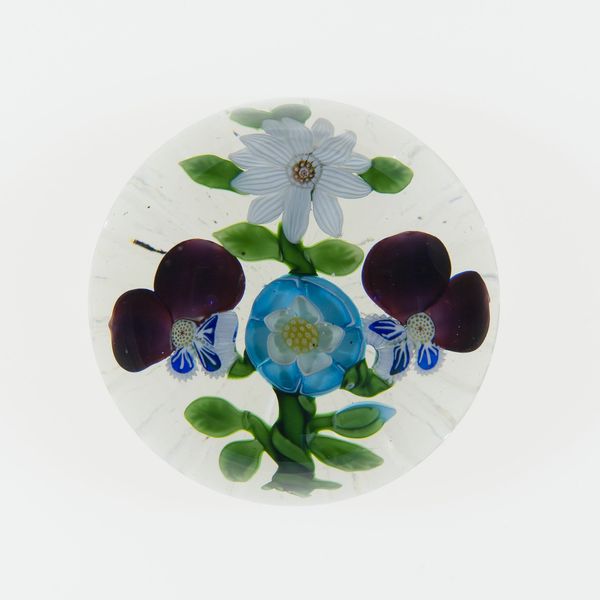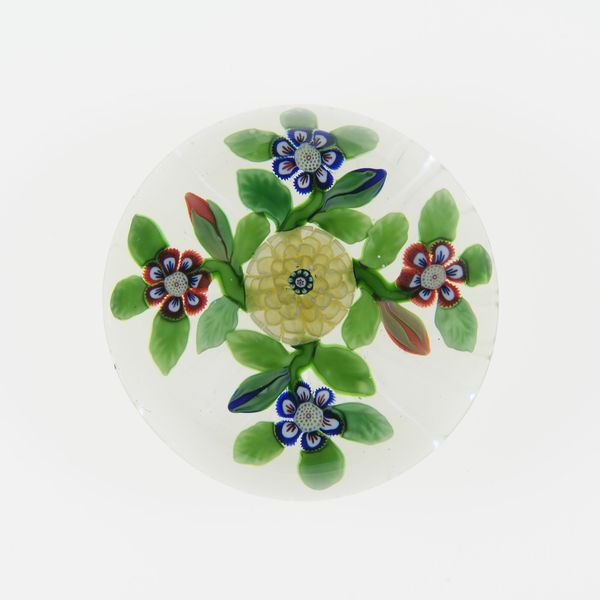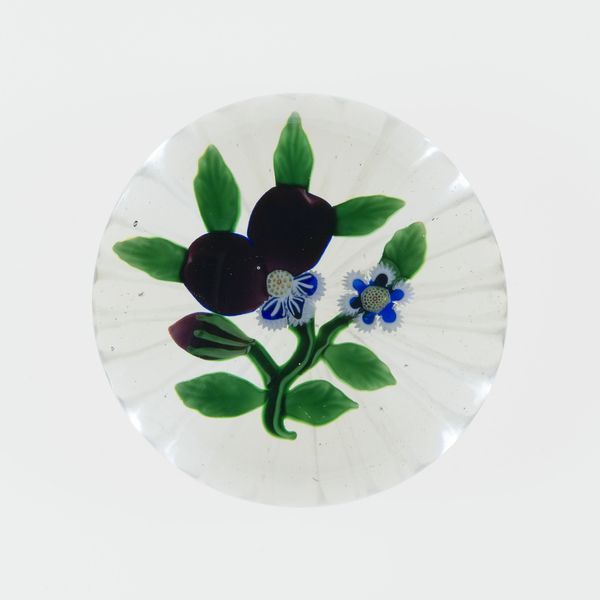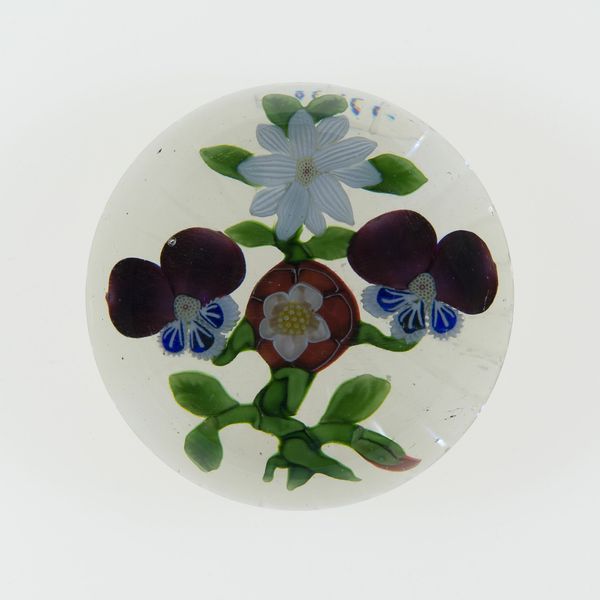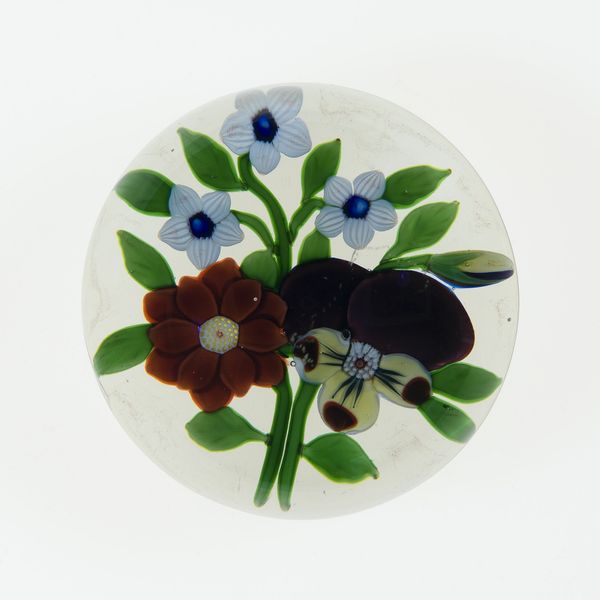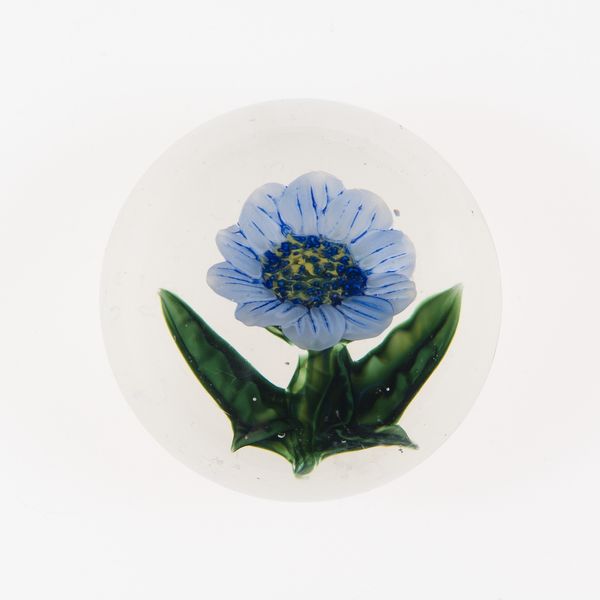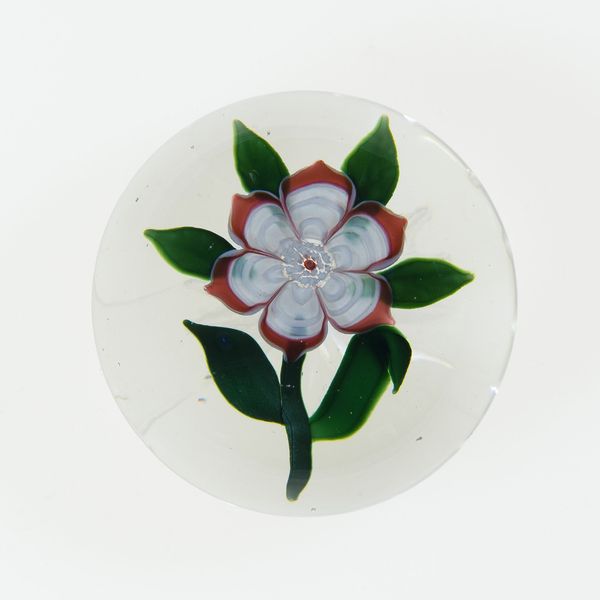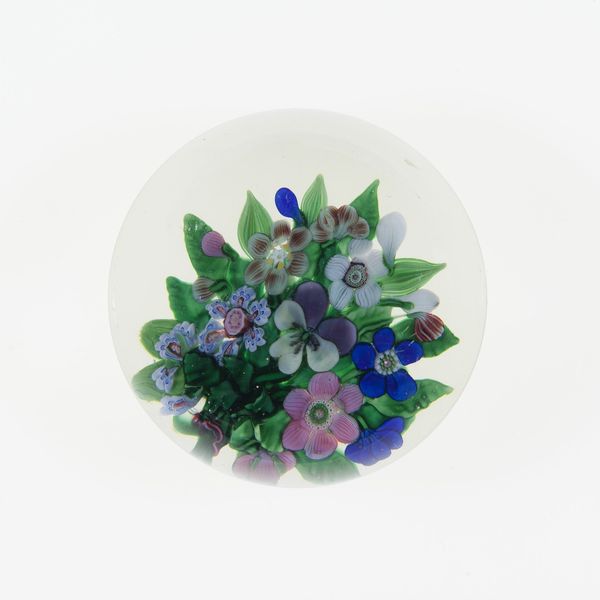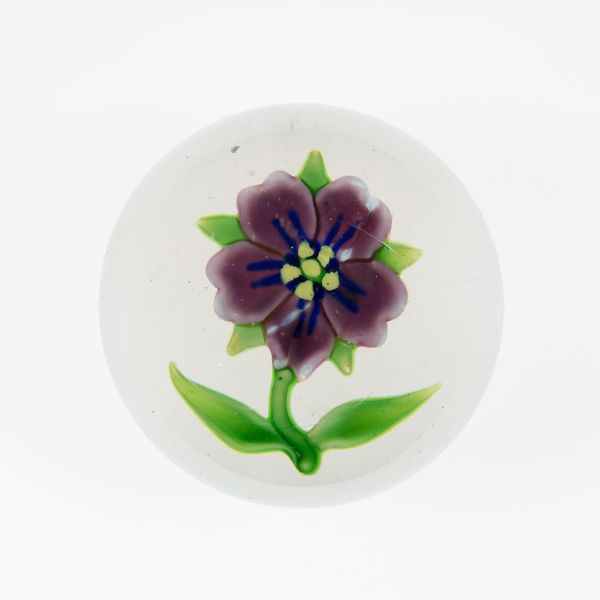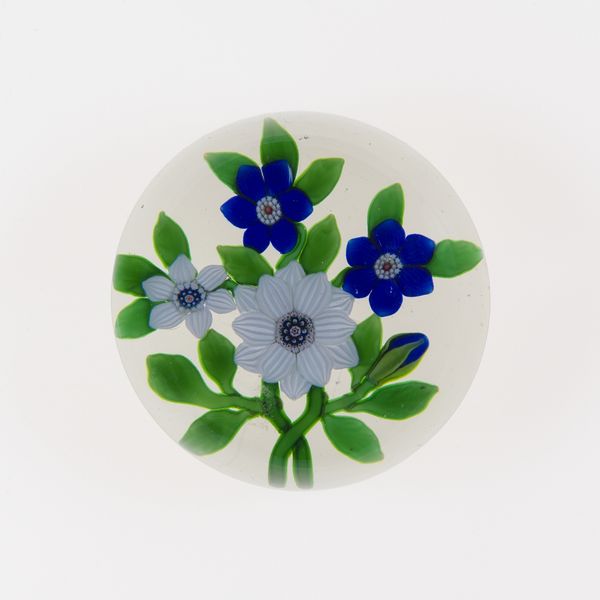
paper, glass
#
paper
#
glass
#
decorative-art
Dimensions: Diam. 8.9 cm (3 3/8 in.)
Copyright: Public Domain
Curator: This captivating glass paperweight, attributed to Baccarat Glassworks and dating from around 1845 to 1860, offers a small universe of meticulously crafted beauty. Editor: It strikes me immediately as a miniature celebration of nature held captive. It's fascinating how this small object holds such intricate details—almost claustrophobic. Curator: Exactly. The Victorian era witnessed a fascination with containing nature, reflected in gardens and domestic objects. Consider how this glass dome preserves idealized floral arrangements; they’re meant to control and display nature within the domestic sphere, mirroring a certain societal power dynamic over the natural world, and even femininity. Editor: Looking closer, the means by which these flowers are trapped in glass are the real story, aren't they? I see layers upon layers, and I imagine highly skilled artisans meticulously crafting each floral element and assembling them within molten glass. Curator: Precisely. There’s also the broader cultural implication of glass production in the nineteenth century; what would mass-produced glass like this have signified at that moment in terms of commodity and class? Editor: You bring up such a critical question. In a world increasingly shaped by industrial processes, the skill embodied in this piece is important. While seemingly decorative, consider the glassworkers' expertise evident in the perfect fusion of colors and forms. Curator: Absolutely. The materiality itself tells a story of labor, skill, and societal aspirations. One can see this object as a metaphor for the curated roles imposed on people, especially women, in that period. Editor: I had not considered that parallel before. It complicates what seemed to be just another decorative item. The object, in holding those meanings, speaks to anxieties, perhaps longings. It’s hardly an innocent knick-knack, is it? Curator: Not at all. Its presence within the Art Institute serves not just as an example of decorative arts, but as a point of entry into discussing those historical constraints and power relations. Editor: I will remember this encounter. Beyond its delicate surface, there is embedded historical value tied to those production processes. The conversation really enriches the experience of viewing this paperweight.
Comments
No comments
Be the first to comment and join the conversation on the ultimate creative platform.
